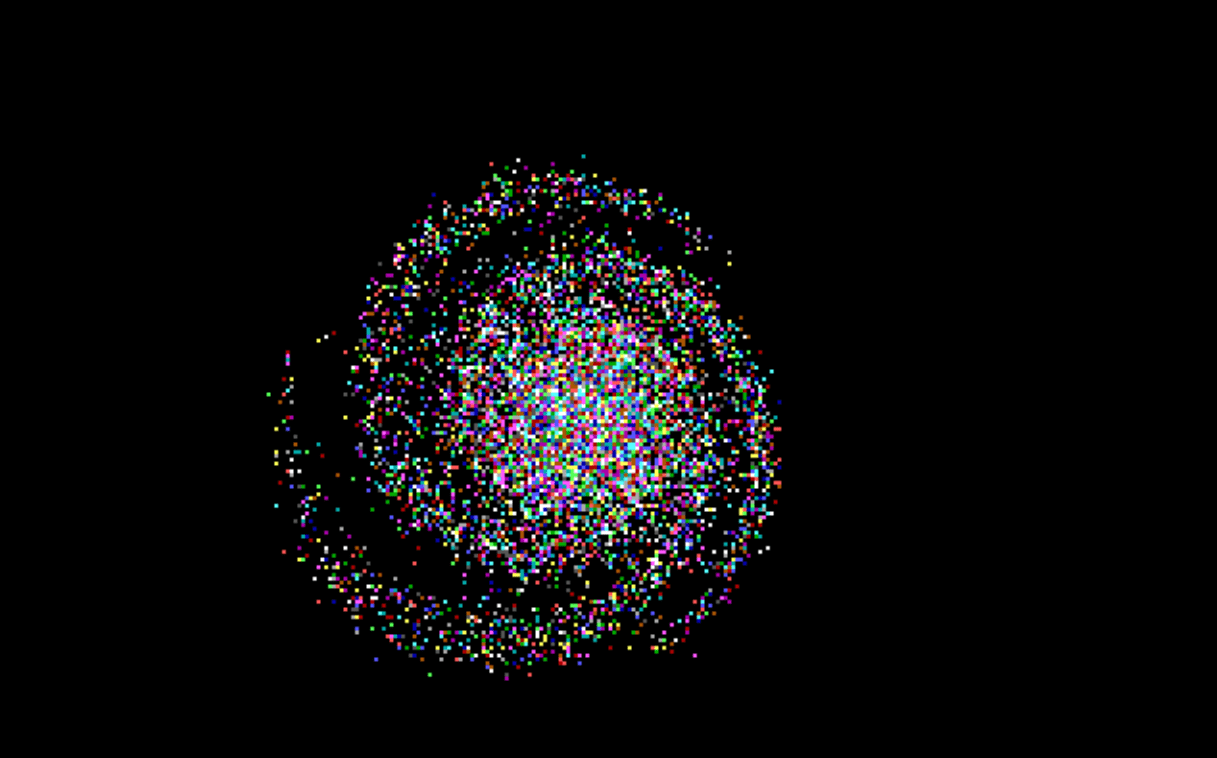Space themed 3D graphics
Table of Contents
1. Galaxy explorer
This QBasic program renders a navigable 3D point cloud galaxy, allowing users to explore a virtual galaxy using mouse or keyboard controls. The program creates a visually engaging simulation of a galaxy with stars distributed in a spiral pattern.
2. Rocket simulator
QBasic program that simulates the takeoff and flight of a rocket from the surface of a planet. This program provides a simple yet engaging 3D visualization of a rocket's journey, allowing users to navigate and observe the rocket's trajectory from various angles.
3. Stars
The 3D Starfield Simulation is a QBasic program that creates a visually captivating simulation of a starfield in three dimensions. This program is designed to render stars moving in space, giving the illusion of flying through a galaxy.
How the Program Works:
- Camera Rotation
- The camera's rotation is calculated to give a dynamic view of the starfield.
- Star Movement
- Each star's position is updated to simulate movement through space. Stars that get too close to the viewer are repositioned to the far distance to create an infinite starfield effect.
- Projection
- The 3D coordinates of each star are projected onto a 2D screen using perspective projection, which scales the stars based on their distance from the viewer.
- Brightness and Color
- The brightness of each star is adjusted based on its distance, with closer stars appearing brighter.
4. Universe explorer
This QBasic program that simulates a navigable 3D universe. Users can freely fly through a dynamically generated universe composed of galaxy clusters, galaxies, and stars. The program employs a clever algorithm to manage the level of detail, dynamically increasing or decreasing the complexity of the universe regions based on the user's position. This ensures a reasonable quantity of stars is rendered at any given time, optimizing performance and visual experience.
What's in it for the Reader?
- Algorithm Insight
- The program provides a practical example of dynamic level-of-detail algorithms, which can be useful for anyone interested in computer graphics, game development, or simulation programming.
- 3D Navigation
- It demonstrates how to implement a 3D navigation system using basic input devices like a mouse and keyboard, offering insights into handling user inputs for movement and interaction in a 3D space.
- Procedural Generation
- The universe is procedurally generated, showcasing how to create complex structures like galaxies and star systems algorithmically.
- Performance Optimization
- The program highlights techniques for optimizing performance in resource-intensive applications, such as limiting the number of rendered objects based on distance.



